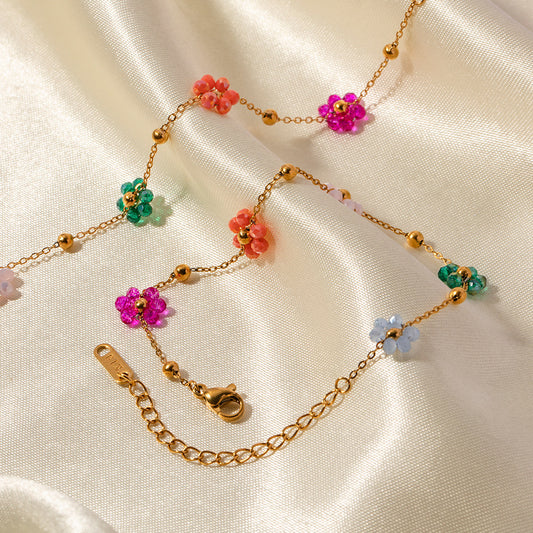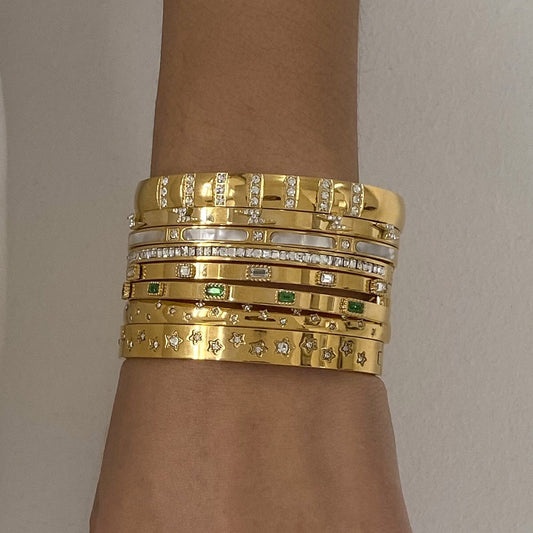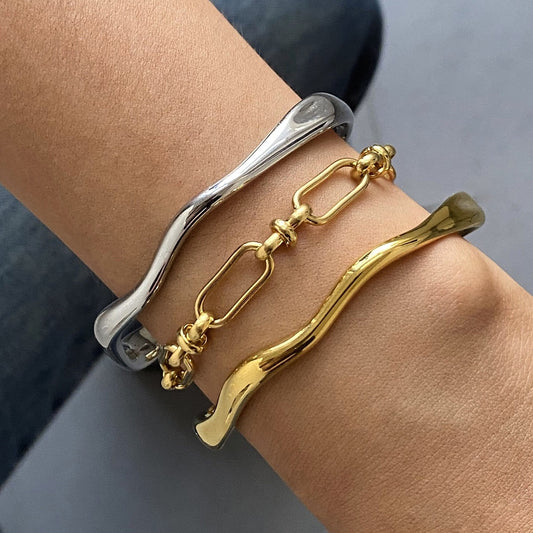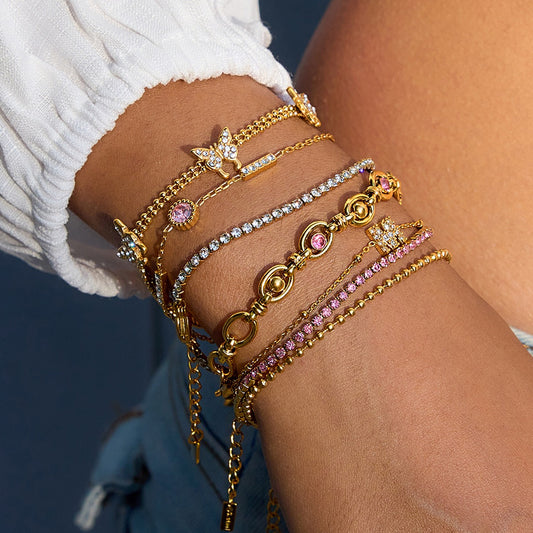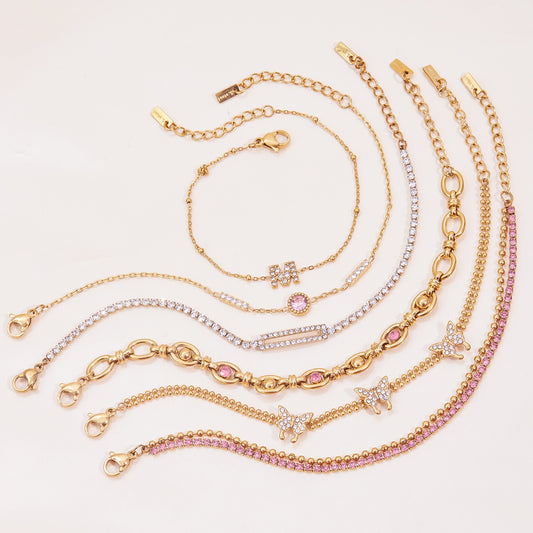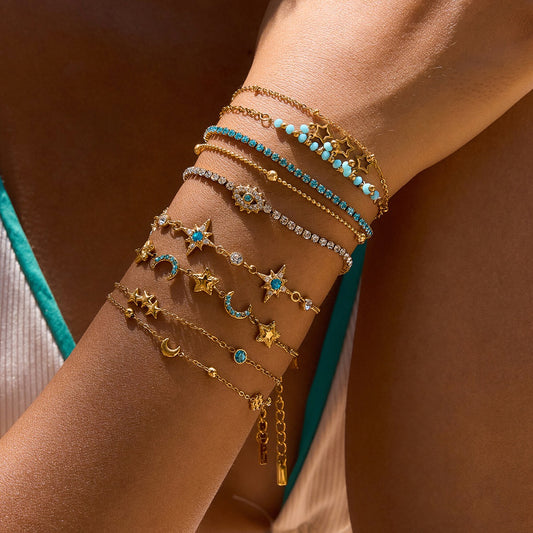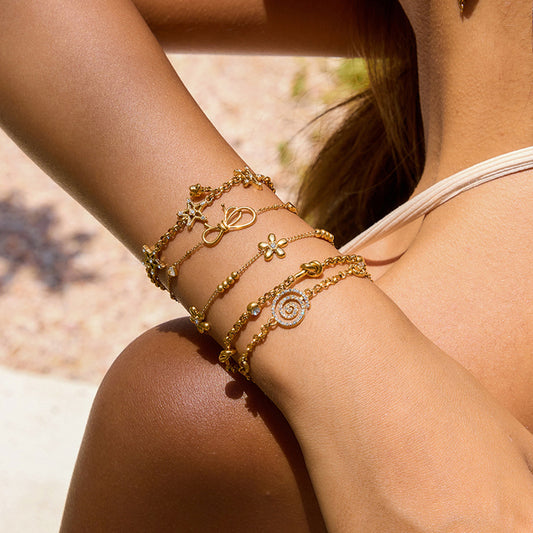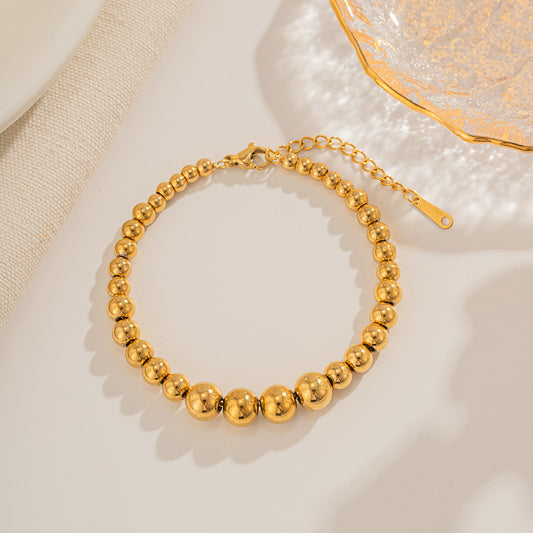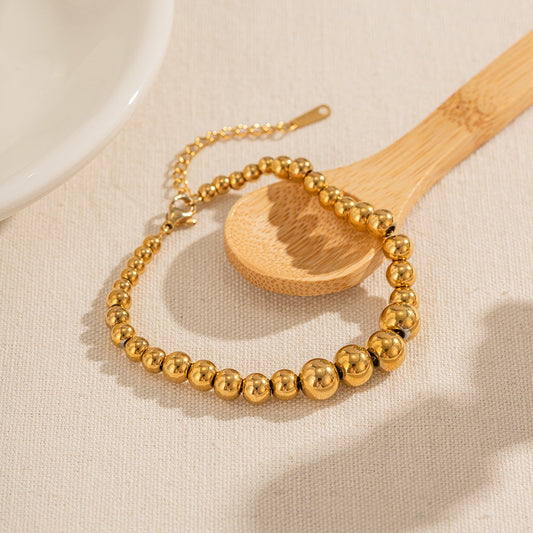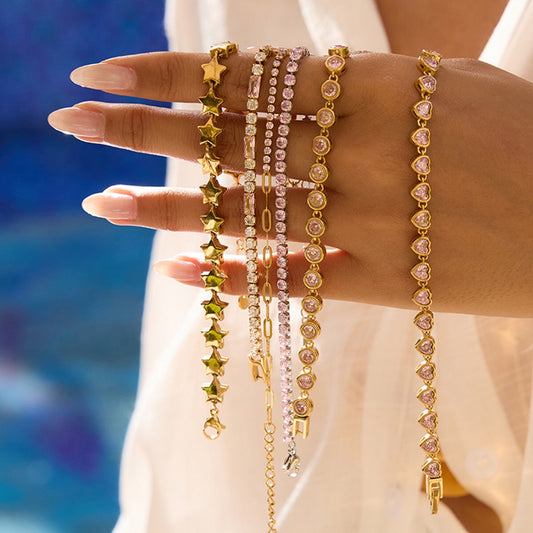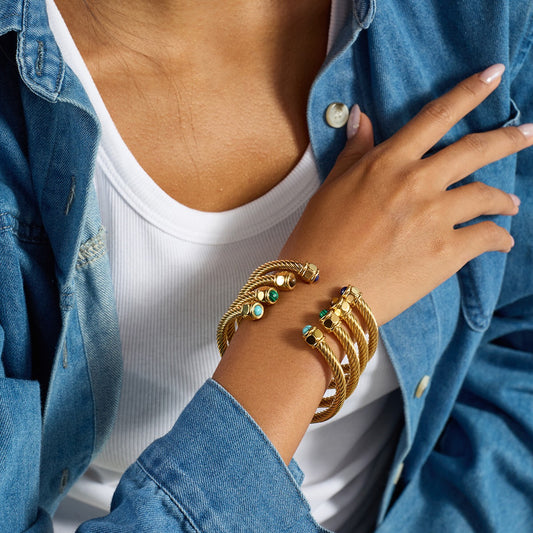Lab grown tennis bracelet has become a standout in ethical jewelry collections, with data from the 2024 Ethical Jewelry Market Report showing that sales of lab grown diamond tennis bracelets have surged 78% year-over-year—and 89% of buyers cite “sustainable sourcing” as their top reason for choosing this piece over traditional mined diamond options. A modern reimagining of the classic tennis bracelet (popularized by tennis star Chris Evert in 1987), this accessory swaps earth-mined diamonds for lab created ones—offering the same dazzling brilliance, durability, and timeless linear design, but with a fraction of the environmental impact. In 2025, the revenue in the Jewelry market worldwide is projected to reach a staggering US$373.87bn. Unlike luxury jewelry reserved for special events, the lab grown diamond tennis bracelet is crafted for daily wear: it complements casual tees, office blouses, and weekend outfits alike, letting you enjoy ethical sparkle every single day. In this guide, we’ll break down everything you need to know about this coveted piece—from its definition to gifting ideas, care tips, and answers to key questions like “how are they made?” and “how much do they cost?”

What Is Lab Grown Tennis Bracelet?
Core Definition & Key Traits
A lab grown tennis bracelet is a linear wrist accessory featuring uniform lab grown diamonds (typically 0.25–1 carat each) set in a metal band (sterling silver, 14k gold, white gold, or platinum), with a secure clasp (usually a box clasp with a safety latch) to prevent slipping. It retains the classic tennis bracelet’s signature “continuous sparkle”—no gaps between diamonds—but uses lab grown stones, which are created in controlled laboratory environments rather than mined from the earth.
Critical to its appeal: Lab grown diamonds are chemically, optically, and physically identical to mined diamonds. They score a 10 on the Mohs scale of hardness (the same as mined diamonds) and exhibit the same fire and brilliance. The only difference is their origin, which is often verified via a tiny laser inscription on the diamond (invisible to the naked eye) from reputable labs like GIA or IGI.
How It Differs from Mined Diamond Tennis Bracelets
The key distinctions boil down to ethics, transparency, and cost:
-
Ethics: Lab grown diamonds avoid the environmental harm of mining (e.g., deforestation, water pollution, soil erosion) and eliminate the risk of conflict diamonds (mined in war zones to fund violence). The 2024 Sustainable Jewelry Index found that lab grown diamonds use 99% less water and 50% less energy than mined diamonds.
-
Transparency: Lab grown diamond origins are fully traceable—jewelers provide certificates detailing the diamond’s growth method and quality. Mined diamond sourcing, by contrast, can be opaque, with gaps in the supply chain.
-
Cost: Lab grown diamonds are 30–50% more affordable than mined diamonds of the same carat, cut, color, and clarity (the “4 Cs”), making a tennis bracelet—once a high-ticket luxury—accessible to more shoppers.
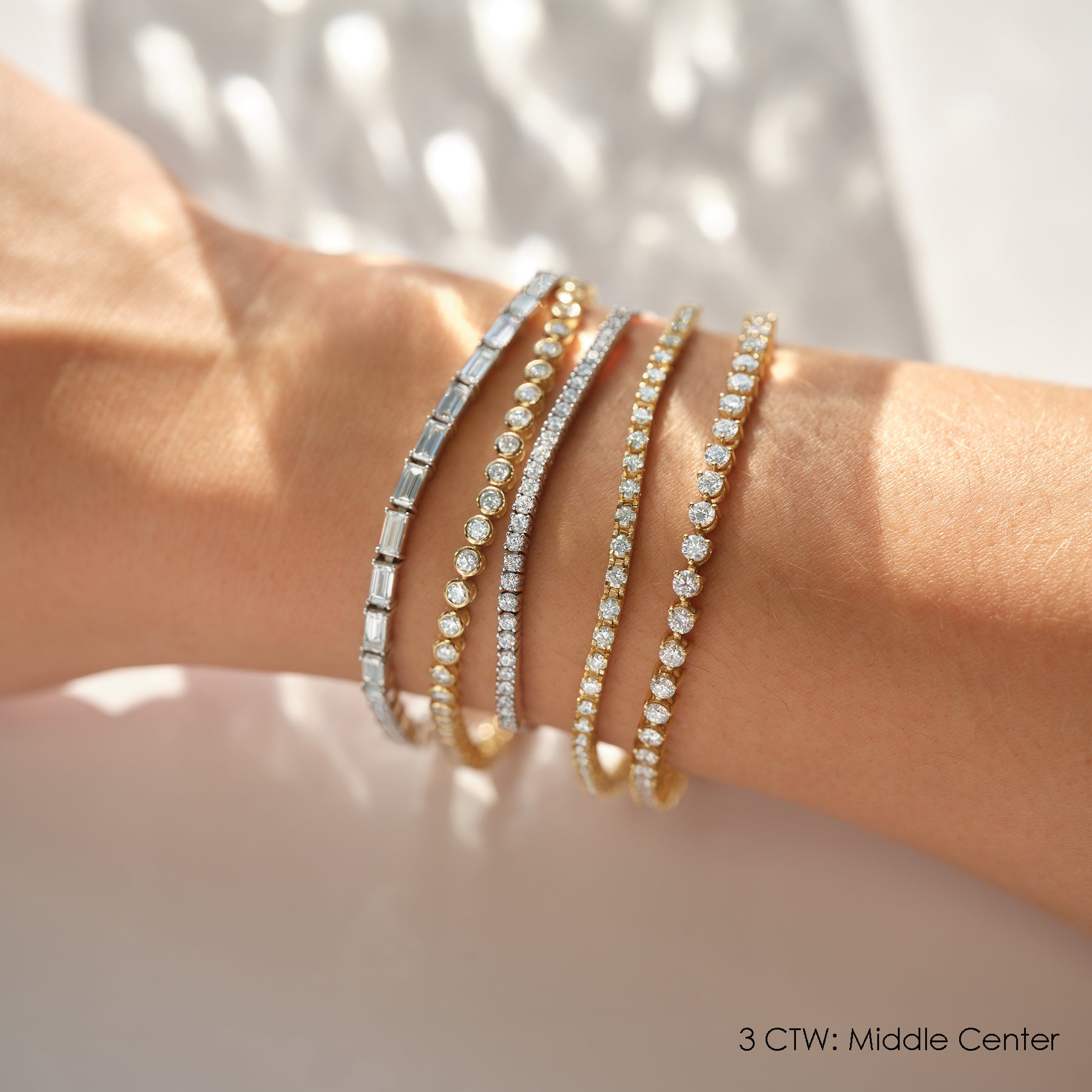
Why Is Lab Grown Tennis Bracelet so Popular?
Ethical & Sustainable Appeal
The biggest driver of popularity is growing consumer demand for “conscious luxury.” A 2024 Consumer Behavior Survey found that 76% of jewelry buyers prioritize sustainability over brand name—and lab grown tennis bracelets fit this trend perfectly. They let you enjoy diamond sparkle without contributing to the environmental toll of mining or supporting unethical labor practices. Brands like Brilliant Earth and Clean Origin have amplified this appeal by marketing lab grown options prominently, making “ethical sparkle” a mainstream choice rather than a niche one.
Versatility for Daily Wear
Unlike formal diamond jewelry (e.g., statement necklaces), the lab grown tennis bracelet is understated enough for everyday use. Its slim profile (typically 2–4mm wide) doesn’t catch on clothing or feel bulky, and the secure clasp ensures it stays in place during tasks like typing, cooking, or running errands. A 2024 Jewelry Usage Poll found that 82% of lab grown tennis bracelet owners wear it “5+ days a week”—proof of its practicality.
Accessible Luxury
Mined diamond tennis bracelets can cost \(5,000–\)20,000+, but lab grown versions offer similar sparkle for \(1,500–\)8,000. For example:
-
A 5-carat total weight (CTW) lab grown diamond tennis bracelet in 14k white gold costs ~\(3,200, while a mined diamond version of the same quality costs ~\)6,800.
This price gap lets shoppers invest in a “forever piece” without breaking the bank—appealing to millennials and Gen Z, who prioritize value and ethics in luxury purchases.

Popular Styles of Lab Grown Tennis Bracelet
Minimalist Lab Grown Tennis Bracelets
Perfect for everyday wear or minimalists:
-
Classic Prong-Set: Uniform lab grown diamonds (0.25–0.5 CTW each) set in 4-prong settings, with a 14k white gold band. The prongs hold diamonds securely while maximizing sparkle—timeless and versatile.
-
Basket-Set Slim: A thinner band (2mm) with basket settings (which hide the metal underneath diamonds), creating the illusion of “floating” stones. Ideal for stacking with thin metal bracelets or wearing solo.
-
Platinum Minimalist: A sleek platinum band (hypoallergenic and durable) with small lab grown diamonds (0.15–0.25 CTW each). Luxurious but understated—great for office wear.
Sparkly & Statement Styles
For those who love bold brilliance:
-
Channel-Set Maxi: Lab grown diamonds set in a “channel” (a metal groove) with no prongs, creating a smooth, continuous line of sparkle. Typically 3–4mm wide, with 1–2 CTW diamonds per stone—perfect for date nights or special events.
-
Mixed-Cut Sparkle: A mix of round and princess-cut lab grown diamonds, adding texture and dimension. The contrast of cuts makes the bracelet stand out without feeling over-the-top.
-
Colored Lab Grown Diamond: Lab grown diamonds in soft hues (light pink, blue, or yellow) set in a matching gold band. Unique and playful—great for adding a pop of color to neutral outfits.

Stackable & Convertible Styles
For versatility and value:
-
Stackable Slim Tennis Bracelet: A super-thin (1.5mm) band with tiny lab grown diamonds (0.1 CTW each). Designed to be stacked with 2–3 identical bracelets or mixed with plain metal bands.
-
Convertible Tennis Bracelet: A style that splits into two smaller bracelets (e.g., a 5-carat CTW bracelet becomes two 2.5-carat ones) or attaches to a necklace chain. Perfect for shoppers who want multiple looks from one piece.
How to Wear Lab Grown Tennis Bracelet
Solo Wear: Let Ethical Sparkle Shine
Wearing the bracelet alone lets its brilliance and ethical story take center stage—ideal for casual days or when you want a subtle luxury boost:
-
Everyday Casual: A minimalist lab grown diamond tennis bracelet (14k white gold, 3-carat CTW) + white V-neck tee + high-waisted jeans + sneakers. The sparkle adds polish without competing with the outfit.
-
Office Attire: A slim basket-set bracelet in sterling silver + tailored blazer + striped button-down + loafers. Professional enough for meetings, but glamorous enough to brighten a busy day.
-
Weekend Errands: A colored lab grown diamond bracelet (light blue stones, 14k yellow gold) + oversized sweater + leggings + ankle boots. The pop of color feels fun and intentional.
Stacking: Trendy & Personalized
Lab grown tennis bracelets are perfect for stacking—mixing styles adds depth and tells a story:
-
Mix Metals (Carefully): Pair a white gold lab grown diamond tennis bracelet with a thin yellow gold band (no stones) and a sterling silver bangle. Stick to 2–3 metals max to avoid clutter.
-
Vary Widths: Combine a slim tennis bracelet (2mm) with a slightly wider plain metal bracelet (3mm) and a tiny beaded bracelet. The different widths create balance without overwhelming the wrist.
-
Focus on One Wrist: Stack on one wrist (e.g., left wrist: tennis bracelet + initial band + beaded bracelet) and leave the other bare. This keeps the look intentional and polished.

Occasion-Specific Styling
-
Beach/Day Trips: A stackable slim tennis bracelet in sterling silver + sundress + sandals = laid-back luxury. The durable metal and secure clasp hold up to sand and sun.
-
Weddings/Bridesmaid Looks: A channel-set maxi bracelet in 14k rose gold + midi dress + heels = elegant and ethical. It complements bridal jewelry without upstaging the bride.
-
Holiday Gatherings: A mixed-cut sparkle bracelet + velvet top + jeans + ankle boots = festive fun. The diamonds add glamour to casual holiday outfits.
Lab Grown Tennis Bracelet: Perfect Gift for Your Best Friend
Why It’s a Meaningful Best Friend Gift
This bracelet is one of the most thoughtful gifts you can give your best friend—here’s why:
-
Shared Values: If your best friend cares about sustainability, a lab grown tennis bracelet says “I get you” and honors their values. A 2024 Gifting Survey found that 87% of best friends cherish “values-aligned gifts” more than generic luxury.
-
Everyday Luxury: Unlike a special-occasion necklace, she’ll wear it daily—every time she looks at her wrist, she’ll think of your bond and the ethical choice you made together.
-
Timelessness: It’s a “forever piece” that won’t go out of style. She can wear it for years, and even pass it down to her kids or grandkids—carrying your friendship forward.
Tips for Choosing the Right One
-
Match Her Style:
-
Minimalist Best Friend: A slim prong-set bracelet in 14k white gold (3-carat CTW).
-
Sparkle-Lover Best Friend: A channel-set maxi bracelet with 5–7 carat CTW.
-
Eco-Conscious Best Friend: Opt for a brand with third-party sustainability certifications (e.g., Brilliant Earth’s “Beyond Conflict Free” label).
-
Trendy Best Friend: A convertible or colored lab grown diamond bracelet.
-
Consider Her Metal Preference:
-
If she wears mostly silver jewelry: Choose a sterling silver or white gold band.
-
If she loves warm tones: Go for yellow or rose gold.
-
If she has sensitive skin: Pick platinum or 14k+ gold (hypoallergenic options).
-
Add a Personal Touch:
-
Engrave the clasp with a meaningful date (e.g., the day you met) or a inside joke (e.g., “Our Sparkle, Our Values”).
-
Pair it with a handwritten note: “This lab grown tennis bracelet is just like our friendship—sparkly, ethical, and built to last forever. I love you!”
How to Clean Lab Grown Tennis Bracelet
Step-by-Step Cleaning Method
Lab grown diamonds require the same care as mined diamonds—here’s how to keep your bracelet sparkling:
-
Gather Supplies: Warm water, mild dish soap (e.g., Dawn), a soft-bristled toothbrush (child-sized works best), and a lint-free cloth.
-
Soak the Bracelet: Fill a small bowl with warm water and 1–2 drops of dish soap. Submerge the bracelet and let it soak for 10–15 minutes (this loosens dirt and oil).
-
Gently Scrub: Use the toothbrush to softly scrub between the diamonds and along the band—pay extra attention to the clasp (dirt builds up here easily). Avoid scrubbing too hard (this can loosen settings).
-
Rinse & Dry: Rinse the bracelet under warm running water to remove soap residue. Pat dry with a lint-free cloth (avoid air-drying, which can leave water spots).
Maintenance Tips to Preserve Sparkle
-
Remove Before Activities: Take the bracelet off before swimming (chlorine damages metal), showering (water loosens settings), or doing chores (cleaning products dull diamonds).
-
Avoid Harsh Chemicals: Keep it away from lotion, perfume, hairspray, and sunscreen. Apply these products 10–15 minutes before putting on the bracelet.
-
Store Properly: When not wearing, lay the bracelet flat in a soft jewelry pouch (many brands include these with purchases) or hang it on a bracelet tree. Avoid tossing it with other jewelry (this can scratch the metal or loosen diamonds).
-
Check the Clasp: Every few months, test the clasp’s safety latch to ensure it’s secure. If it feels loose, take it to a jeweler for repair (most offer free clasp adjustments).
How Lab-Grown Diamond Tennis Bracelets Are Made
Step 1: Creating Lab Grown Diamonds
Lab grown diamonds are made using one of two methods—both mimic the natural diamond-growing process but in a controlled setting:
-
Chemical Vapor Deposition (CVD): The most common method for tennis bracelet diamonds. A tiny diamond “seed” (a fragment of a mined or lab grown diamond) is placed in a chamber filled with carbon-rich gas (methane). The chamber is heated to 800–1,000°C, breaking down the methane into carbon atoms, which deposit onto the seed and grow into a diamond. This process takes 2–4 weeks and produces high-quality, colorless diamonds ideal for tennis bracelets.
-
High Pressure High Temperature (HPHT): Used for larger or colored lab grown diamonds. The seed is exposed to extreme pressure (60,000 atmospheres) and temperature (1,500°C)—mimicking the conditions deep in the earth. This method takes 1–2 weeks and is often used for fancy-colored diamonds (pink, yellow) in statement tennis bracelets.
After growth, the diamonds are cut and polished using the same techniques as mined diamonds, then graded for the 4 Cs.
Step 2: Crafting the Tennis Bracelet
Once the lab grown diamonds are ready, the bracelet is assembled:
-
Metal Band Creation: The band (gold, silver, or platinum) is shaped into a linear strip, with grooves or prongs added to hold the diamonds.
-
Diamond Setting: Each diamond is carefully placed into its setting (prong, channel, or basket) and secured with metal. Jewelers use magnification to ensure the diamonds are aligned evenly (no gaps or tilting) for the “continuous sparkle” effect.
-
Clasp Installation: A box clasp with a safety latch is attached to the ends of the band—critical for security, as tennis bracelets are prone to slipping off.
-
Quality Check: The bracelet is inspected for sparkle, alignment, and clasp security. Most brands also include a certificate of authenticity for the lab grown diamonds.
How Much Is a Lab Grown Tennis Bracelet?
Price Range & Key Cost Factors
Lab grown tennis bracelet prices vary based on diamond quality, metal type, and brand—here’s a breakdown:
-
Budget-Friendly (\(1,000–\)2,500): 2–3 carat CTW, lab grown diamonds (SI clarity, H-I color) set in sterling silver or 10k gold. Great for first-time buyers or everyday wear.
-
Mid-Range (\(2,500–\)5,000): 3–5 carat CTW, diamonds (VS clarity, G-H color) set in 14k gold. Most shoppers choose this range for a balance of quality and value.
-
Luxury ($5,000+): 5–10 carat CTW, diamonds (VVS clarity, D-F color) set in 18k gold or platinum. These are investment pieces—often gifted for milestone occasions (e.g., 10-year friendships, career achievements).
What Impacts the Price?
-
Diamond Quality: Higher clarity (VVS vs. SI) and better color (D vs. I) increase cost. For daily wear, SI clarity and G-H color are ideal—they look sparkling to the naked eye but cost less.
-
Metal Type: Platinum is the most expensive (2–3x the cost of 14k gold), followed by 18k gold, 14k gold, and sterling silver.
-
Brand: Designer brands (e.g., Tiffany & Co., David Yurman) charge a premium for their name, while direct-to-consumer brands (e.g., James Allen, Brilliant Earth) offer lower prices (no retail markup).
-
Total Carat Weight (CTW): More carats mean higher cost—each additional carat can add \(500–\)2,000, depending on diamond quality.
Conclusion: Lab Grown Tennis Bracelet—Sparkle Ethically Daily
Lab Grown Tennis Bracelet isn’t just a piece of jewelry—it’s a blend of ethical choices, everyday practicality, and timeless sparkle. With sales surging 78% year-over-year, it’s clear that shoppers are embracing this “conscious luxury” option, which lets them enjoy diamond brilliance without compromising their values or budget. Whether you’re wearing it solo for a casual errand run, stacking it with other bracelets for a trendy look, or gifting it to your best friend as a symbol of shared values, this bracelet turns “special-occasion luxury” into something you can cherish every day.
Ready to add ethical sparkle to your daily wardrobe (or gift it to your best friend)? Start by:
-
Defining your budget: Choose from budget-friendly to luxury options—there’s a lab grown tennis bracelet for every price point.
-
Prioritizing diamond quality for your needs: For everyday use, SI clarity and G-H color are more than enough—they look dazzling to the naked eye without the premium price tag. If you want the bracelet for special events, opt for VS clarity and D-F color for maximum sparkle.
-
Checking brand certifications: Stick to brands with third-party sustainability certifications (like Brilliant Earth’s “Beyond Conflict Free” or Clean Origin’s “Carbon Neutral” labels) to ensure the diamonds are truly ethically made. Direct-to-consumer brands often offer more transparency and lower prices than traditional retailers.
-
Personalizing for gifting: If it’s for your best friend, add a small engraving or choose her favorite metal tone—these tiny touches turn the bracelet into a meaningful keepsake that honors your bond.
Don’t let the idea of “luxury jewelry” feel out of reach. A lab grown tennis bracelet lets you sparkle ethically, wear it daily, and invest in a piece that tells a story—yours or your best friend’s. Whether you’re treating yourself or celebrating someone special, this bracelet is more than an accessory: it’s a choice to look good and do good, every single day. Shop your perfect lab grown tennis bracelet today, and let your ethical sparkle shine.






